Are You Eating the Worst Foods for Eye Health?
Medically reviewed by our experts
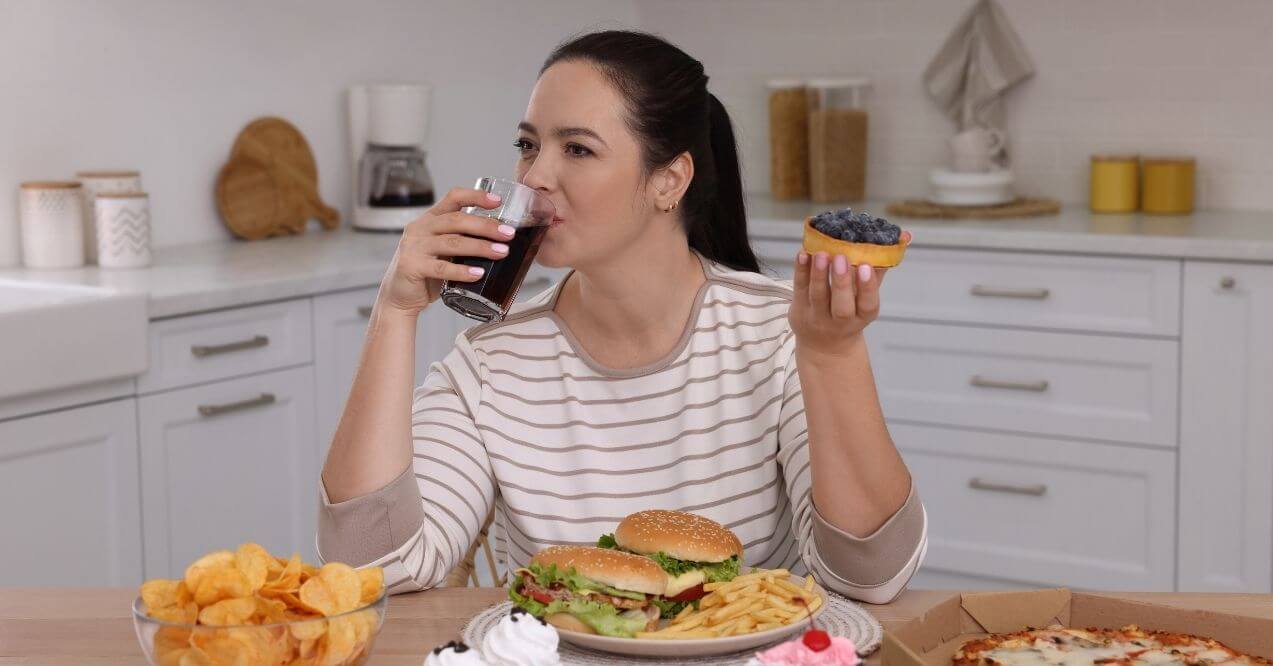

As we age, maintaining healthy vision becomes increasingly important. What many don’t realize is that the foods on our plate play a crucial role in either supporting or potentially harming our eye health. Research suggests that certain dietary choices may contribute to visual changes and ocular discomfort over time.
The worst foods for eye health often hide in plain sight in our daily meals. Understanding the connection between nutrition and vision can help you make informed choices that maintain optimal eye function well into your golden years. Let’s explore how your diet might be affecting one of your most precious senses.
Worst Foods for Eye Health
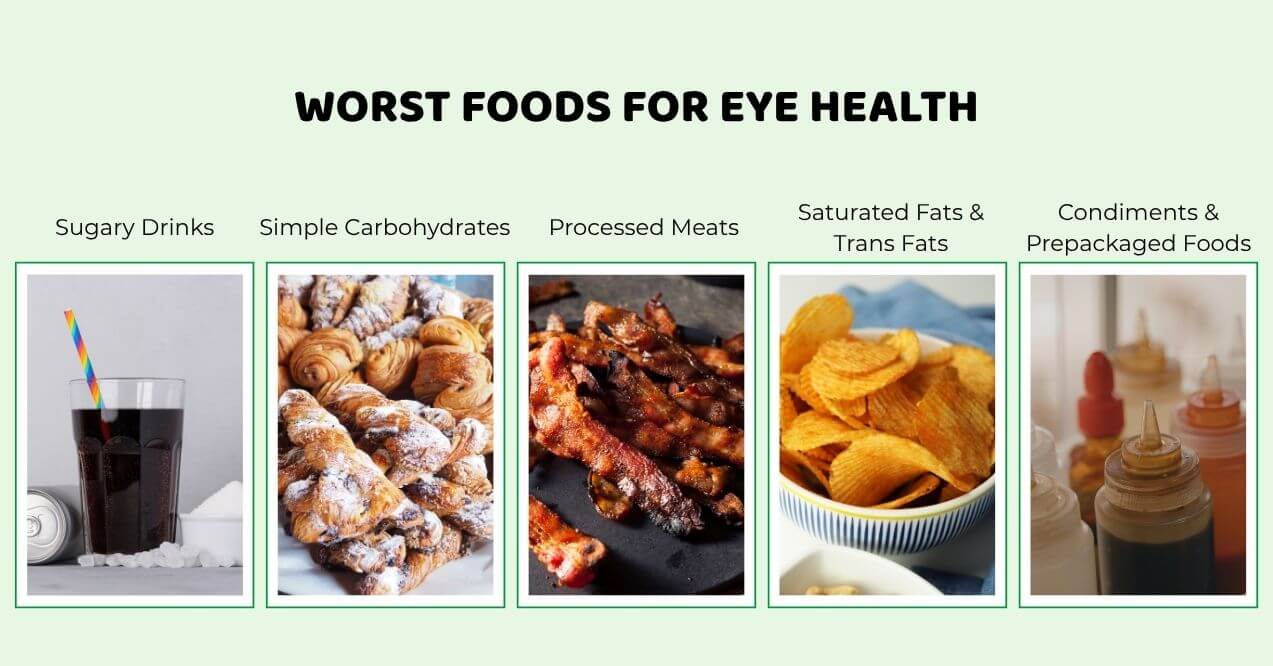
Understanding what is bad for eyesight begins with recognizing how diet affects your vision health. The food choices we make daily can either support or compromise our visual acuity as we age. Research indicates certain food groups may contribute to ocular stress and potentially accelerate age-related vision changes. Let’s examine the five most problematic food categories for your eyes.
1. Sugary Drinks
Those colorful sodas, fruit juices, and sweetened teas might satisfy your taste buds, but they can create significant challenges for your eyes. These beverages contain excessive amounts of refined sugars that can:
- Trigger inflammatory responses throughout the body, including delicate eye tissues
- Potentially contribute to cellular damage in the eye’s structure
- Disrupt normal fluid regulation processes
These beverages are also considered among the worst foods for lymphatic system health, which indirectly affects eye function by impairing the body’s natural filtration processes.
For better eye health, consider replacing sugary drinks with water, herbal teas, or vegetable juices that provide beneficial nutrients rather than empty calories.
2. Simple Carbohydrates
White bread, pastries, and refined pasta products might be convenient and satisfying, but they can contribute to eye health concerns through several mechanisms:
- Rapid conversion to glucose, causing abrupt fluctuations in blood composition
- Potential contribution to retinal tissue stress when consumed regularly
- Lack of protective nutrients found in whole grain alternatives
Foods with high glycemic index ratings can affect the tiny blood vessels that nourish the eye. These vessels are particularly vulnerable to damage from poor dietary choices, especially as you age.
Replacing simple carbohydrates with complex alternatives like whole grains, quinoa, and sweet potatoes can help maintain stable energy levels while supporting eye health.
3. Processed Meats
Hot dogs, bacon, deli meats, and other processed meat products contain concerning levels of compounds that may negatively affect eye health:
- High sodium content that can influence fluid balance and pressure within the eye
- Nitrates and preservatives that may interfere with oxygen transport to eye tissues
- Low nutritional value compared to fresh, unprocessed protein sources
These products are known to be foods that increase eye pressure for sensitive individuals. Studies indicate that regular consumption of processed meats correlates with higher rates of visual changes in older adults.
Choosing fresh, lean protein sources like poultry, fish, legumes, and nuts provides essential nutrients that support eye structure and function without the harmful additives.
4. Saturated Fats & Trans Fats
Fried foods, commercial baked goods, and many fast-food options contain unhealthy fats that can compromise eye health through various pathways:
- Potential interference with proper circulation to the eyes
- Creation of oxidative stress that damages delicate eye structures
- Contribution to inflammatory responses that affect visual clarity
These foods are also considered among the worst foods for memory, suggesting they impact both cognitive and visual function through similar mechanisms. The connection between brain health and eye health is increasingly recognized in research.
Healthier fat alternatives include:
- Olive oil and avocados (monounsaturated fats)
- Walnuts and flaxseeds (omega-3 fatty acids)
- Fish like salmon and mackerel (DHA and EPA)
5. Condiments & Prepackaged Foods
Those convenient bottled sauces, dressings, and prepackaged meals often hide ingredients that may compromise eye health:
- Excessive sodium that can disrupt fluid balance in eye tissues
- Hidden sugars that appear under various names on labels
- Preservatives and artificial colors that offer no nutritional benefit
Many condiments combine multiple problematic ingredients. For example, a typical commercial salad dressing might contain refined sugars, unhealthy oils, and high sodium levels – creating a triple threat to eye health.
Creating simple homemade alternatives using herbs, spices, olive oil, and vinegar not only tastes better but also supports overall health, including visual function. Reading labels carefully helps you identify and avoid products with potentially harmful ingredients.
Can Diet Cause Eye Conditions?
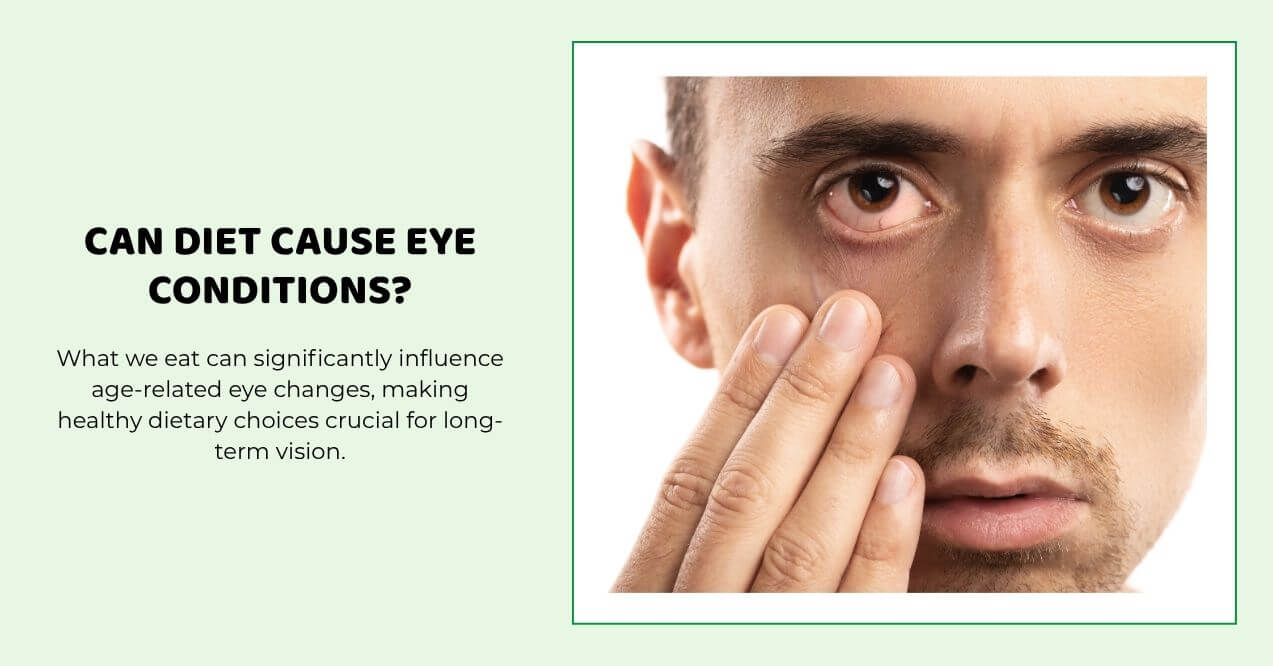
The connection between what we eat and how well we see becomes increasingly significant as we age. Research consistently demonstrates that dietary patterns play a crucial role in maintaining or compromising eye health. While genetics and environmental factors contribute to visual changes, nutritional choices remain one of the few factors we can actively control.
Poor dietary habits can accelerate age-related changes in eye tissues through several mechanisms:
- Oxidative stress – Certain foods increase free radical production, which can damage the eye’s delicate structures, particularly the macula (the central part of the retina responsible for detailed central vision).
- Inflammatory responses – Diets high in refined carbohydrates and unhealthy fats promote chronic low-grade inflammation that affects the tiny blood vessels supplying nutrients to the eyes.
- Cellular damage – Excessive sugar consumption can lead to glycation – a process where sugar molecules attach to proteins and impair their function, affecting the lens and other eye structures.
Two common age-related visual changes demonstrate the diet-eye health connection:
- Age-related lens clouding – This condition involves the progressive clouding of the eye’s lens, causing blurry vision and increased sensitivity to glare. Studies indicate that antioxidant-poor diets accelerate this process, while nutrient-rich eating patterns help maintain lens clarity.
- Age-related macular deterioration – This condition affects the macula and is a leading cause of visual impairment. Research shows that diets high in processed foods and low in protective nutrients significantly increase the risk of developing this condition.
Lifestyle factors also matter. Many people wonder, does wearing glasses make your eyesight worse? In reality, glasses don’t damage your vision — they simply correct it, while natural aging and dietary habits have a far greater influence on long-term eye health.
Best Foods to Support Eye Health
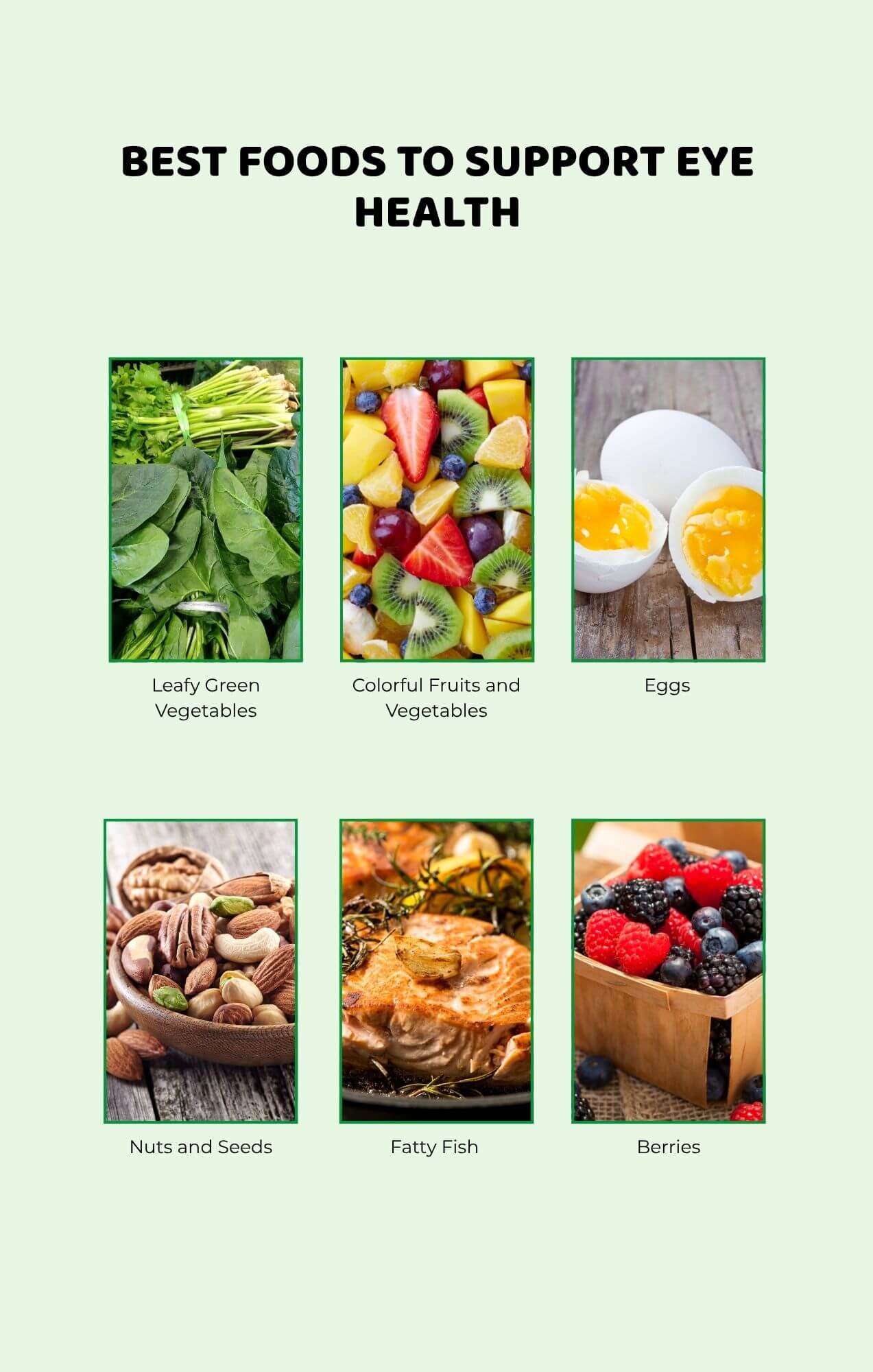
While does your eyesight improve with age is a question many ask, the natural aging process typically brings changes to visual function. However, the right nutritional choices can significantly support eye health and help maintain visual clarity as you age.
Eye-Nourishing Superfoods
The following foods contain powerful compounds that contribute to eye health:
- Leafy Green Vegetables – Spinach, kale, and collard greens contain lutein and zeaxanthin – protective compounds that accumulate in the macula and help filter harmful blue light. Aim for 1-2 servings daily.
- Colorful Fruits and Vegetables – Orange bell peppers, carrots, sweet potatoes, and citrus fruits provide beta-carotene and vitamin C, which support the health of various eye structures and help maintain proper visual function.
- Eggs – The yolks contain bioavailable lutein, zeaxanthin, and zinc – a mineral that helps transport vitamin A from the liver to the retina for producing protective pigments.
- Nuts and Seeds – Walnuts, flaxseeds, and chia seeds deliver plant-based omega-3 fatty acids that support proper tear function and may help alleviate dry eye discomfort.
- Fatty Fish – Salmon, mackerel, and sardines provide DHA – an omega-3 fatty acid that maintains structural integrity of cell membranes in the retina and supports visual processing.
- Berries – Blueberries, blackberries, and goji berries contain anthocyanins that support night vision and may help reduce visual fatigue from digital screens.
Even with the best intentions, consistently obtaining optimal eye nutrients through diet alone can be challenging. SightMax provides a research-backed solution that complements your healthy eating habits.
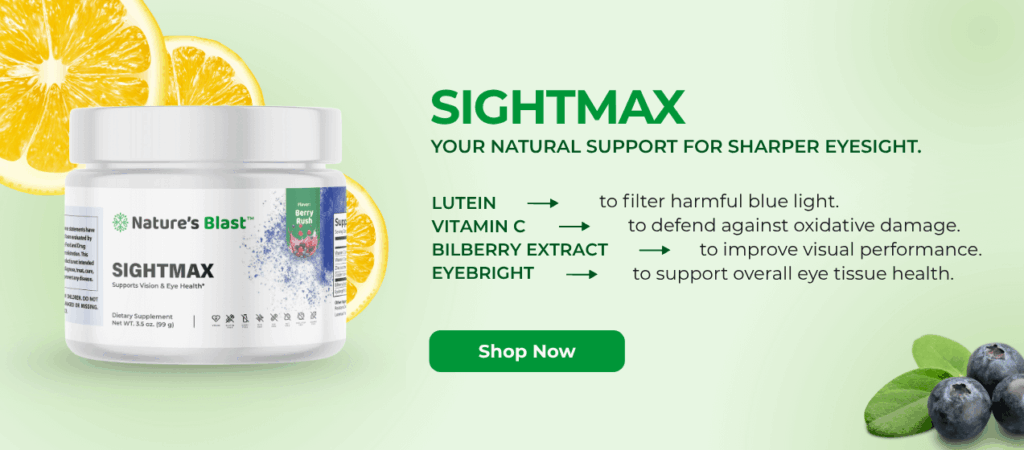
This premium eye health formula delivers a precise blend of key nutrients including Vitamin C and Vitamin E – powerful antioxidants that support cellular protection, alongside Lutein & Zeaxanthin – concentrated plant compounds that accumulate in eye tissues.
This targeted approach ensures your eyes receive essential nutrients in optimal amounts, regardless of dietary variations. When combined with the eye-friendly foods mentioned above, SightMax offers a comprehensive strategy for supporting long-term visual function and comfort.
Conclusion
Your dietary choices significantly impact your visual function, especially as you age. Understanding the worst foods for eye health – sugary drinks, simple carbohydrates, processed meats, unhealthy fats, and sodium-laden condiments – allows you to make informed decisions that support long-term eye health. By limiting these potentially harmful options and increasing consumption of nutrient-dense alternatives like leafy greens, colorful fruits, eggs, nuts, and fatty fish, you provide your eyes with essential protective compounds.
Visual health is a lifelong journey, not a quick fix. The dietary patterns you establish today help maintain visual clarity and comfort in the years ahead, supporting your active, independent lifestyle.
Yes, sweetened beverages contain refined sugars that can trigger inflammatory responses in eye tissues and potentially disrupt fluid regulation. These drinks provide no nutritional benefit while contributing to cellular stress that may affect visual function over time.
Processed meats contain high sodium levels and preservatives that may affect blood flow to eye tissues. The sodium content can influence fluid balance within the eye, while nitrates and other additives offer no nutritional support for visual function.
Absolutely. Research shows that increasing consumption of nutrients like lutein, zeaxanthin, and omega-3s supports retinal function and maintains visual clarity. A diet rich in colorful plants and healthy proteins provides essential building blocks for eye tissues.
Allergies typically cause symptoms like redness, itching, and watering but don’t directly produce floaters. Floaters result from structural changes within the eye’s vitreous fluid. However, rubbing irritated eyes during allergy episodes could potentially stress eye structures.
FAQ
References



